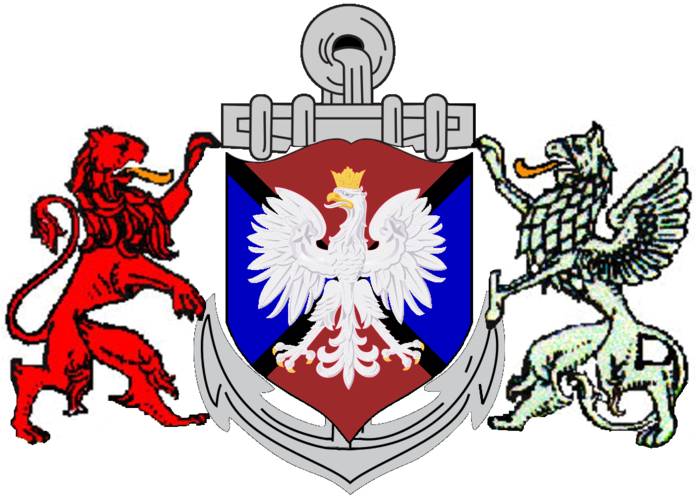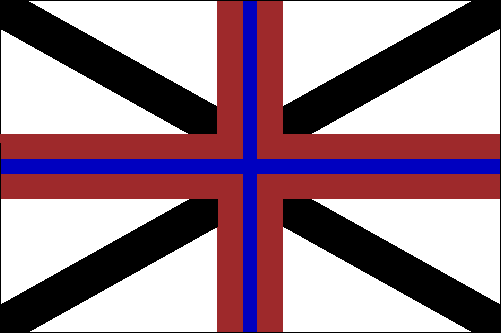Polithstovia
Back to European Country Pages:
The country of Polithstovia was another amalgamation of minor nations that were unceremoniously grouped together by the Allied Powers, through the League of Nations, after the end of World War One. The land that had made up the minor countries of Poland, Lithuania, Estonia and Latvia had been ceded from the Germanic States and the remains of the Russian Revolution. By themselves the four countries would never survive as a buffer state between the Germanic States and the new Soviet Union. By 1925 the Soviet Union was already making political noises for the return of the lost lands to be returned to Soviet control. The League of Nations backed by the Commonwealth and the two Americas gave them a firm 'No'. The staus quo held for another 14 years with Polithstovia realising that from its position in Europe, that the countries that were supporting it would realistically be unable to offer direct support in military terms. Polithstovia was isolated and needed to secure its own military future.
The creation of Polithstovia was aided by grants of military supplies that were surplus to the Major Powers at the end of WW1 and the follow on Geneva Arms Limitation talks that made so much naval tonnage excess to the treaty that was subsequently signed. The Commonwealth and the two Americas also sent advisors to aid the setting up of the new Navy, Army and Air Forces of Polithstovia. The Navy was to be the smallest of the services as it was felt that the land borders between the two giants would require the major amount of monetary expenditure.
The mid-1930's heightened Polithstovias unease as the Germanic States expanded with its grabbing the unaligned minor nations on its borders. Increased spending on the military from 1937 went some way to modernising the Polithstovian armed forces but it was too little to late. The non-aggression Pact between the Germanic States and the Soviet Union spelt the end of Polithstovia. But they were offered a short lifeline when Argentina and Chile fired the opening shots of the war six to eight months before the Germanic States really wanted to begin. The European nations were brought into an ever growing war as the interlocking defence treaties drew the lines for the following conflict. This gave the Polithstovian High Command two weeks to prepare before the Wermacht poured accros its borders and its Air Force was swept from the skies. This blitzkreig was aided by the two Prussian division raised by Polithstovia from the old east Prussia region that been ceded to Polithstovia turning coat on the Germanic States border and allowing the Wermacht through their defence lines without a shot being fired. It also showed that cavalry divisions were no match for armoured formations or air power. A week after the Wermacht made its opening moves and the Polithstovian High Command had drawn off its reserves from those units facing the Soviet Union border, the Soviet Union forces attacked along its front line wiping out the remaining Polithstovian forces and pouring through to the agreed line that was to be created between the Germanic States and the Soviet Union along the Narew, Vistula, and San rivers. Before the end of 1939 Polithstovia had ceased to exist. The extra military might created by combining the four countries failed to hold back the two superpowers on their doorstep.
Probably the most successful gambit by the Polithstovian High Command was the sending of the Fleet to Britain while Polithstovia was still neutral and passage through the Oresund was guaranteed by the Scandinavians. The Germanic States did try to intervene with this fleet movement and caught and sunk a cruiser that had had engine problems while still in the Baltic. The bulk of the fleet arrived intact in British waters and went on to provide excellent service. As the war progressed the various major powers did transfer naval vessels to Polithstovian control to replace losses of Polithstovian warships. Those vessels will not be shown in the following naval list as they are already covered by the naval list of the countries that built them.

Naval Emblem of Polithstovia.

Naval Ensign of Polithstovia.
The Polithstovian Navy started out small with gift tonnage from the Commonwealth countries, mainly British ships that were excess to requirements and would have been sold for scrap otherwise. These ships included a Bellerophon class battleship, three County Class armoured cruisers, six 'L' class destroyers, four Flower class sloops, and six Aberdare class minesweepers. That was the major "over a 1000 tons" ships while some other smaller vessels were also transferred for non-warfare duties (Harbour launches, Tugs etc). The ships were transferred to Polithstovian control in 1920-22. The three year period allowed the three Devonshire class armoured cruisers to start their continuing role as training ships for the fleet, being some of the first ships to arrive in Polithstovian waters.
As can be seen the Polithstovian Navy will not be big and will not include many new ships as the Navy received little funding for new ships. Most of the 'gift' ships exceeded 25 years in Polithstovian service, taken from when they arrived in Polithstovia, so some of the ships were nearly 40 years old before being replaced or scrapped. A case of having to make do. The new battlecruiser laid down in 1935 was the most spent for the navy for many years and had only been possible by the actions of the Germanic States in Czechoslovakia and the emergence of the Nazis in control of the Germanic States.